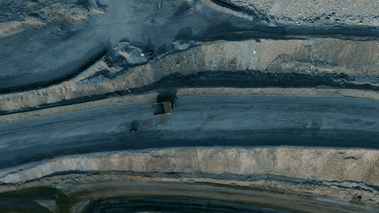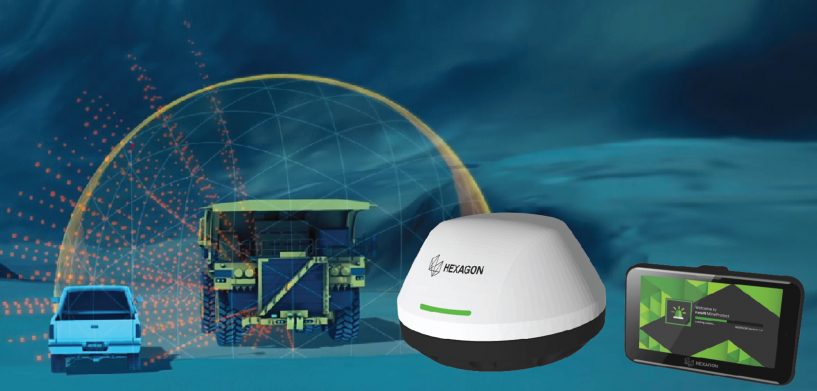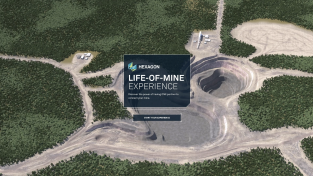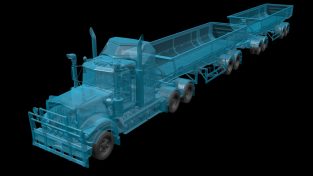In the pursuit of zero harm, April 28 marks a timely reminder from the United Nations and its World Day for Safety and Health at Work. While the UN focuses attention on the need for a safety and health culture in all workplaces, Hexagon is applying its leadership in digital reality solutions to safeguarding workers across the many industries it serves.
Hexagon solutions are used to improve safety in cities, construction, manufacturing and more. The company is also helping to make mining safer. It shares its customers’ core belief that the most important assets coming out of a mine are the people who make mining possible.
The mining industry is all too aware of the consequences posed by hazards at work. In 2020, the last year for which statistics are available, the ICMM (International Council on Mining and Metals) reported 44 occupational fatalities.
Miners face numerous daily dangers above and below ground: poor visibility, blind spots, fatigue, distraction and slope instability, for instance. Heavy machinery, monotonous work and long hours heighten the risks.
Combined with distraction, fatigue is said to be behind 65% of accidents in open pit mines.
According to NIOSH (the U.S. federal agency, National Institute for Occupational Safety and Health) employee fatigue contributes to at least 20% of all workplace incidents and costs employers at least $135 billion per year.
Point solutions supplied by multiple vendors are no match for such a wide array of risks. A comprehensive safety response demands an integrated technology portfolio, proven change management and a collective commitment to zero-harm culture.
Comprehensive, integrated mine safety portfolio
Hexagon’s MineProtect portfolio integrates systems for collision avoidance, operator alertness, personal protection and vehicle intervention. HxGN MineProtect Collision Avoidance System, or CAS, is used in more than 50,000 vehicles worldwide. It protects drivers and equipment with 360-degree operator awareness via a non-intrusive cabin display unit for vehicles, assets and operators in open pit mines. It integrates with slope monitoring software developed by Hexagon company, IDS GeoRadar.
It means mines can now receive real-time equipment visualization with timely alerts about hazardous areas for people and machinery. Workers and equipment are protected from injury-threatening events by being forewarned of no-go-zones.
For customers such as Cerrejón in Colombia and Codelco in Chile, the benefits of an integrated safety portfolio are clear.
How Cerrejón tackles risks and prevents mine accidents
Extending more than 270 square miles (690 square kilometers), Cerrejón is the largest open-pit coal mine in Latin America and the 10th biggest in the world. Complete with its own railway system and shipping terminal, the mine employs thousands of people operating hundreds of vehicles. Zero-harm culture is enshrined in all aspects of the business.
CAS not only helped the mine to minimize the risk of accidents, it also addressed other safety challenges.
“We put in place a system of random monitoring and preventive monitoring of compliance with stop signs in the mine and in the company,” explained Álvaro Uribe of Cerrejón’s Production Safety Committee.
“And this allowed us, from 2014 up to date, to gradually decrease up to 90% non-compliance of stop signs. This is a great benefit to the safety performance of the company. We are being preventative, and we are identifying and correcting wrong habits in our operation.”
In February, the Colombian Safety Council (Consejo Nacional de Seguridad de Colombia) selected Cerrejón as a finalist for its occupational health and safety program.
Serious about safety at Codelco
Codelco turned to Hexagon for a collision avoidance solution at its Radomiro Tomic mine in northern Chile. In a video shared by the company, CAS was revealed to have helped reduce potential collisions by 90% and decrease over-speeding events by 54%.

“We are a large organization, more than 100 mining trucks, 40-plus ancillary vehicles and 14 loading units,” said Pedro Díaz, Radomiro Tomic Mine Superintendent. “Thus, technical implementation is complex and we are a large universe of people.
“Here is where technology becomes a useful tool. When we are able to reach all parts of our operation, everybody understands the system and sees how valuable it is.”
Evans Díaz, Radomiro Tomic Mine Engineering and Process Control Superintendent, added: “It’s a vertically integrated technology and every information CAS outputs is visible through one platform.”
Safety the smartest investment a mine can make
Collision warning systems are important but only part of the answer. Hexagon customers understand that to take zero harm seriously, they also need an enterprise solution to transform safety data into actionable intelligence; backed by a proven change management methodology to ensure a meaningful safety culture prevails.
CAS was already the market-leader among collision avoidance systems. The recently launched CAS 10 advances the technology by consolidating even more functionality into fewer parts: one smart antenna and one display.
Codelco and Cerrejón understand that investing in safety need not be at the expense of productivity. In fact, it’s the most valuable investment a mine can make. CAS 10 embodies this sound investment, integrating several sensors in one powerful platform that will protect miners and their equipment. It’s a landmark enabler for next-generation autonomy, offering mines a uniquely intelligent approach.
Most importantly, everyone gets home safely: on the UN’s World Day for Safety and Health at Work; and every other day.

















